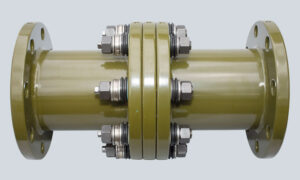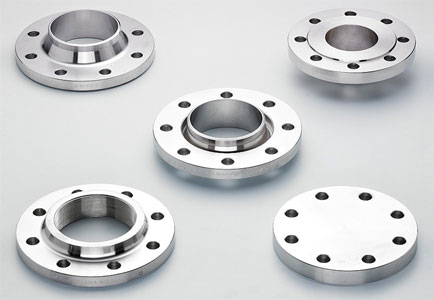What is Flange? What are Flange Usage Areas
What is flange, a construction element, usually produced as a standard, used to sealingly join two machine or piping elements. Flanges are classified according to their pressure and size (diameter).
Table of Contents
Flanges are also used in pipelines, machines and to transfer rotational motion. There are some points to be considered in the installation of flanges and to ensure sealing.
The word flange comes to our language from the German word flansch. It is produced from different materials such as iron, copper or brass.

What is a Flange? What are the Types?
Flanges classified according to pressure and dimensions have a circular structure. As a result of connecting 2 circles to each other with the help of bolts, it fulfills the function of sealing element.
The number of bolt holes varies according to the pressure class. There are different standards of flange types available worldwide. Some flange types are as follows.
- Blind flange
- Threaded flange
- Socket weld flange
- Slip on flange
Blind flange is used to close the blinding of the pipeline.

What is a Flange? How to Determine Dimensions?
The criteria to be considered when determining how to measure the flange are as follows:
- Pressure value of the installation
- Temperature value of the installation
- Flange material
- Pipe diameter of the installation
What Does Flange Mean 5 Main Values That Affect Its Size
- Inner diameter, i.e. d dimension
- Outer diameter, i.e. D dimension
- Bolt circle diameter, i.e. size C
- Wall thickness, i.e. T size
- Number of bolts
What is a Flange? How to Produce
For the production process, which is divided into 3 as forging and casting, cast flangeshave a lower cost and are produced with a simple process. Forged flanges, on the other hand, are prone to faulty production due to air holes, cracks or some manufacturing defects. It is also produced by cutting flange method.
Flange Production Methods and Cost Comparison
| Criteria | Casting | Plate/Cutting | Tattoo |
|---|---|---|---|
| Cost | Better | The best | Good. |
| Force | Better | Good. | The best |
| Tolerance | The best | Better | Good. |
| Material Waste Class | Better | Good. | The best |
| Variety of Materials and Sizes | The best | Good. | Better |
Most Commonly Used Materials
- Mild/Carbon Steel
- Stainless Steel
- Machinable iron
- Aluminum
The advantage of forged flanges is that they can be produced as desired in terms of shape. Forged flanges have lower carbon content and are difficult to rust. The most commonly used material in flange production is carbon steel.
Flange Surface Treatments and Coatings
As a final process, flange coating is performed in accordance with the required standards. Flange manufacturing techniques significantly affect flange performance.
What is Flange? Flange Usage Areas
- Some areas where flanges are frequently used:
- Petrochemical Industry: Flanges are used at the joints of pipelines in refineries, chemical plants and petrochemical plants.
- Energy Generation: Flanges play an important role in power generation plants such as power plants, nuclear power plants, hydroelectric power plants and thermal power plants.
- Motor Vehicles and Industrial Machinery: Flanges are used in motor vehicles and industrial machinery to transmit rotational motion to another part.
- Flange types and characteristics:
- Weld neck flashings: Butt welded to the end of a pipe to provide a flange suitable for high temperature and pressure.
- Threaded flashings: It has an internal (female) thread, into which a threaded pipe is screwed. This is relatively easy to install but is not suitable for high pressure and temperature.
- Socket weld flashings: It has a straight bore with a shoulder at the bottom. The pipe is inserted into the hole so that it is opposite the shoulder and then welded in place with a fillet weld from the outside. This is used for small diameter pipes operating at low pressure.
- Slip-on flanges: They have a straight bore, but no shoulder. Corner welds are applied to the pipe on both sides of the flange.
- Lap joint flanges: consist of two parts; an elbow and a backing flange. The lower part is butt welded to the end of the pipe and contains a small flange without a bore.
The water pump and flange are two important parts used in water transportation and distribution systems. A water pump is a device that creates pressure to transfer water from one place to another.
A flange is a connecting element used in areas such as pipelines, machinery, valves and pumps. The flange is used to join two parts with a bolt.
Click here for flanged circulation pump prices. Click here for full stainless flanged pumps.
Click here for detailed information about circulation pumps.

